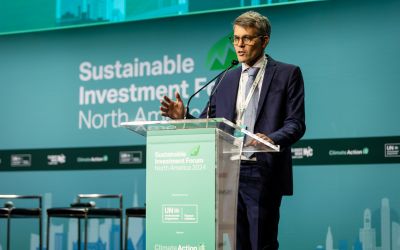How to measure the temperature of sovereign assets
What does the data tell us about the temperature of sovereign assets and how investors can assess their alignment with climate targets and underlying risks resulting from exposure to countries with misalignment? Read the research by FTSE Russell and Beyond Ratings Research below.

FTSE Russell and Beyond Ratings offer a methodology to assess countries’ implied global warming temperatures based on their national commitments concerning climate change mitigation, as per their NDCs (“Nationally Determined Contributions”), submitted to the UNFCCC. This approach is particularly relevant for investors who want to assess their alignment with climate targets (e.g. 2°C targets), and the underlying risks resulting from exposure to countries presenting a misalignment with these targets.
FTSE Russell’s and Beyond Ratings’ methodology, which assesses that the warming temperature of NDCs remains above 3°C globally, is built on the proprietary CLAIM model (Climate Liabilities Assessment Integrated Methodology); it enables forward-looking assessments of countries alignment with long-term climate goals. In particular, this solution allows assessing country GHG emissions budgets consistent with a global 1.5°C or 2°C target (or any other target). In addition, it can compare these budgets with those derived from the political commitments of countries, and estimate a temperature equivalence by country.
This paper represents an introduction to:
- the key principles of the CLAIM budget assessment model;
- the variables used in the model and key outputs;
- the approach applied to assess country temperatures beyond carbon budgets;
- the climate equation used in this analysis.
This approach to measuring the temperature (implicit global warming trajectory) of sovereign investments consists of four simple key steps:
assessing 2°C carbon budgets by country;
evaluating gaps between these budgets and the emissions level induced by countries’ policy commitments;
estimating countries’ temperatures resulting from these gaps; and
calculating aggregate results based on portfolios or benchmarks.
To read the full research paper click here
© 2021 London Stock Exchange Group plc (the “LSE Group”). All information is provided for information purposes only. Such information and data is provided “as is” without warranty of any kind. No member of the LSE Group make any claim, prediction, warranty or representation whatsoever, expressly or impliedly, either as to the accuracy, timeliness, completeness, merchantability of any information or of results to be obtained from the use of FTSE Russell products or the fitness or suitability of the FTSE Russell products for any particular purpose to which they might be put. Any representation of historical data accessible through FTSE Russell products is provided for information purposes only and is not a reliable indicator of future performance. No member of the LSE Group provide investment advice and nothing contained in this document or accessible through FTSE Russell products should be taken as constituting financial or investment advice or a financial promotion. Use and distribution of the LSE Group data requires a licence from an LSE Group company and/or their respective licensors.






